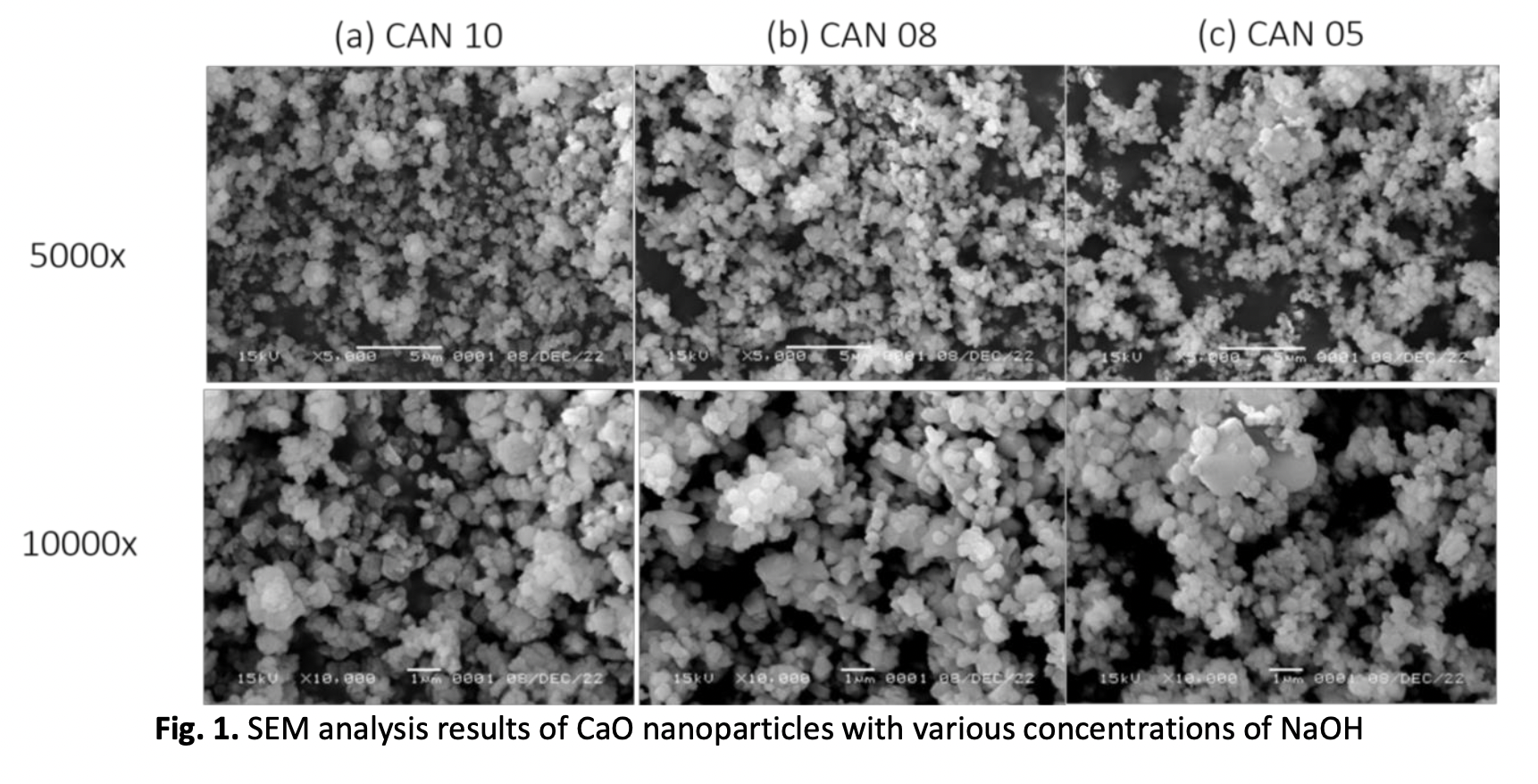Calcium Oxide Nanoparticle Production and its Application as Photocatalyst
DOI:
https://doi.org/10.37934/araset.30.3.168181Keywords:
CaO, nanoparticle, degradation, photocatalyst, indigo carmineAbstract
This study aimed to synthesize and characterize calcium oxide (CaO) nanoparticles as a photocatalyst in the degradation process of indigo carmine (IC) dyes. Several steps were carried out to produce CaO nanoparticles by mixing 0.5 M of CaCl2 solution with various NaOH solutions (0.5; 0.8; and 1.0 M). Experimental results showed the prospective control of CaO particle sizes. The experiments also confirmed that the greater concentration of NaOH correlates with the greater yield of nanoparticles produced. The best condition to produce CaO nanoparticles was obtained when using the ratio of CaCl2: NaOH of 1:2. Additional results showed the difficulties in the production of CaO particles in the nanometer size, which is due to the existence of solid agglomeration, giving ideas to the need in putting some additional experimental steps. The photocatalytic degradation studies showed several factors affecting the photoreaction rate, including processing time, catalyst dosage, and dye concentration. CaO nanoparticles had the best performance in catalyzing indigo carmine in 50 minutes, which was shown by the combination of 10 mg of CaO nanoparticles and 80 ppm of dye concentration.




























